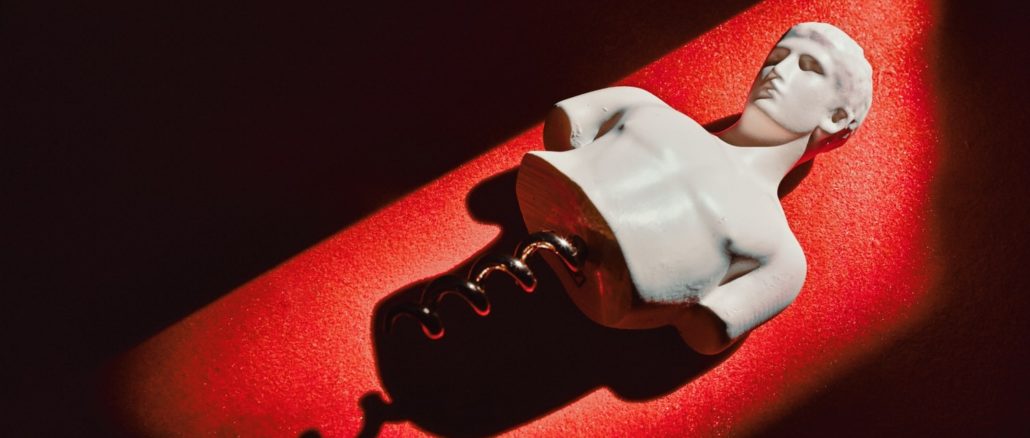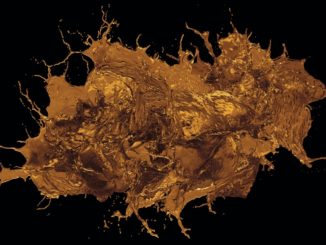
My wife’s heart rate looked like a roller-coaster. A particularly boring roller-coaster — only ups and downs — but running at a manic pace. I put my hand on Keane’s arm as she slept; the roller-coaster slowed. She needs me, I thought. And for the first time since I’d left her eight months earlier, I knew for sure I wanted us to be together again. The nurse popped into the recovery room, looking quizzically at the monitor. I moved my hand away and the roller-coaster started up again. See? I told the nurse silently as I replaced my hand. She knows we’re supposed to be together.
When I was a kid, roller-coasters traveled in swooping arcs above the amusement park, their wooden exoskeletons shuddering. Coasters had only two directions — up or down. Okay, maybe occasionally backwards. And they’d stop too, terrifyingly, at the apex of the highest arc. At some point, I quit riding them. I had enough uncertainty in my life — why should I pay for more?
Maybe five years before I met Keane, when I was (unbeknownst to me) on the downslope of my 16-year relationship with Sharon, she and I found ourselves at a giant theme park. I sat on a bench in the shadow of a roller-coaster while she used the facilities. The coaster wasn’t wooden, but in almost every other respect it reminded me of the rides of my youth. The cars glided gently along the track, up and down; it didn’t look scary at all, I told Sharon when she returned. I must have been convincing, because before I knew it we were strapped into a car with a couple of senior citizens and off we went.
Yes, the track arced up and down like the old-timey rides. But what I couldn’t see from the ground was that the individual cars also moved independently. They spun around as they traveled along the track, building up enough force to (almost) keep my screams from leaving my mouth. Sharon screamed back, “GENTLE! You said it was GENTLE!” and the AARP members next to us remained placid as teenagers. As placid as Keane now, with my hand resting lightly on her arm. She knows I’m good for her.
I’d never seen such tangible evidence of the power of love. Not when Keane got down on one knee to propose. Not when we married each other in a lovely Episcopal church in Chelsea (the one in Manhattan). Her heartbeat on the monitor was clear, elemental. My touch calmed her all the way to the core of her being, quieted the feral impulses that ruled her when she was awake; surely that meant something.
But only one of us witnessed the incredible power of touch to heal — Keane slept right through it. Then the anesthesia started wearing off. Keane shrugged my hand away, autonomous again, and the roller-coaster swung back into action.
“Feral” is not linguistically related to the word “fear,” but they look close enough that spellcheck leaps to change the former to the latter. You might domesticate a feral animal, but its innate wildness just sinks deeper inside, lulled into remission by the twice-daily sound of the can opener. Does the wildness ever disappear? Sharon had a cat, Chester, who spent most of his life sunning himself and purring — but the vet had to wear thick leather gloves to get near him. Chester’s attack instinct survived despite all the love he got at home.
As for “fear,” you can’t change that to anything — not unless the scared person recognizes she’s afraid. Even then, she needs to have the capacity to change. Keane occasionally acknowledged her insecurities, but I didn’t realize how omnipresent they were, traveling with her wherever she went, like Fear had embedded a GPS-tracker under her soft, supple skin.
While we dated, she was able to keep her biggest fears at bay. A couple of times she burst into tears unexpectedly, but I saw that as a sign of closeness; I had created a safe space for her. What better foundation for a relationship?
As time went on, though, it became harder to keep her true nature in check. My feral wife attacked without warning — not physically, not literally, but emotionally — and I was her primary target.
She still loved me, but sometimes — and this could happen even in mid-conversation — I would unknowingly morph into one of the people who had done unspeakable things to her before she could defend herself. I only knew pieces of these stories; I knew even less about how an everyday interaction might trigger my transformation into one of her old antagonists.
I was just me, working alone in my basement office, glad to see Keane when she came home at the end of the day. I’d leap up from my desk to hug her.
“You always want something from me!” she’d growl, and I’d disentangle my arms from her waist.
“I just wanted to say hello.” And so we’d begin our evening — Keane angry and detached; me hurt and confused. Had I become her mother again, lying in wait with who knows what chaotic intent?
I want to say it wasn’t always like that. But it was mostly like that, especially after we married. I’d been used to living with a degree of confusion in my youth, but even when my parents were drunk and inconsistent, I knew they knew they were being mean to me, Elaine. Keane could be stone-cold sober (she was, sometimes) and still conflate me with a monster from her past. Eventually I learned some cues — a dead-behind-the-eyes look, a mask of flesh where her face had just been. I’d try to give her a wide berth at those times, but sometimes she itched for a fight. And I was lonely, starved for connection. Hope, as they say, springs eternal: Maybe this time will be the time I’ll connect with Keane. But it never was.
No, not “never.” We had moments of connection as glorious as the sun bursting through a cloudy day, and often as unexpected. Like Obergefell Day, or as most of the world knows it, June 26th, 2015: the day the Supreme Court handed down its decision in Obergefell v. Hodges turning our “gay marriage” into a regular marriage, legal in all 50 states.
Keane and I burst into tears and called each other the minute we heard the news. We cried on the phone. We hugged and cried when Keane got home. And then we decided to go out for a celebratory dinner. I took a picture of Keane across the restaurant table, grinning harder than I’d ever seen her grin — just beaming, and my wife was not a beamer.
I kept that picture for a long time, long after we split — until my computer went crazy and I dumped everything inessential. So I don’t have it in pixels anymore but I still have it in my head. And it’s not just a static picture there, because I can remember not just that one frozen moment but the rest of the night as well. After I took that photo, my wife drank too much. I ate too much and felt ill. Instead of taking care of me, Keane berated me for “ruining the evening.” Of course for me it was ruined when she ordered that third mega-glass of wine. We fought until I fell asleep. But I was awake long enough to ponder the irony of now being fully, Supreme Court–approved married to someone who attacked me when I needed her most.
The morning after, Keane apologized. She always did. Which was great; I’m all about contrition when it’s backed up by action. But no matter how many times she apologized, she never learned how to change the behavior, or even to recognize its onset.
If I loved her enough, showed her compassion, gave her the support she’d never had, I thought that would change things, that she’d begin to understand loving behavior. We’d get close for a while but then she’d jump back — like healthy affection was a bungee cord: she could only stretch it so far before it snapped, leaving her flailing about with nothing to grab hold of.
I left her for the first time three months after Obergefell Day, but as I said, we tried for a while to work things out. After all, her heart clearly loved me — I’d seen scientific proof of it on the hospital monitor. But what you see is never the whole story, is it?
Elaine Bennett
Elaine Bennett (she/her) is an award-winning speechwriter and definitely not the lady from Seinfeld, whose last name is Benes. Her piece “History Repeats” was a Semi-Finalist for the 2020 Brooklyn Non-Fiction Prize. A graduate of Smith College and The Brearley School, and a Mets fan who named her dog Fenway, she lives on the traditional land of the Wampanoag, also known as Cape Cod.
Featured image: Artwork by Girl With Red Hat on Unsplash.



